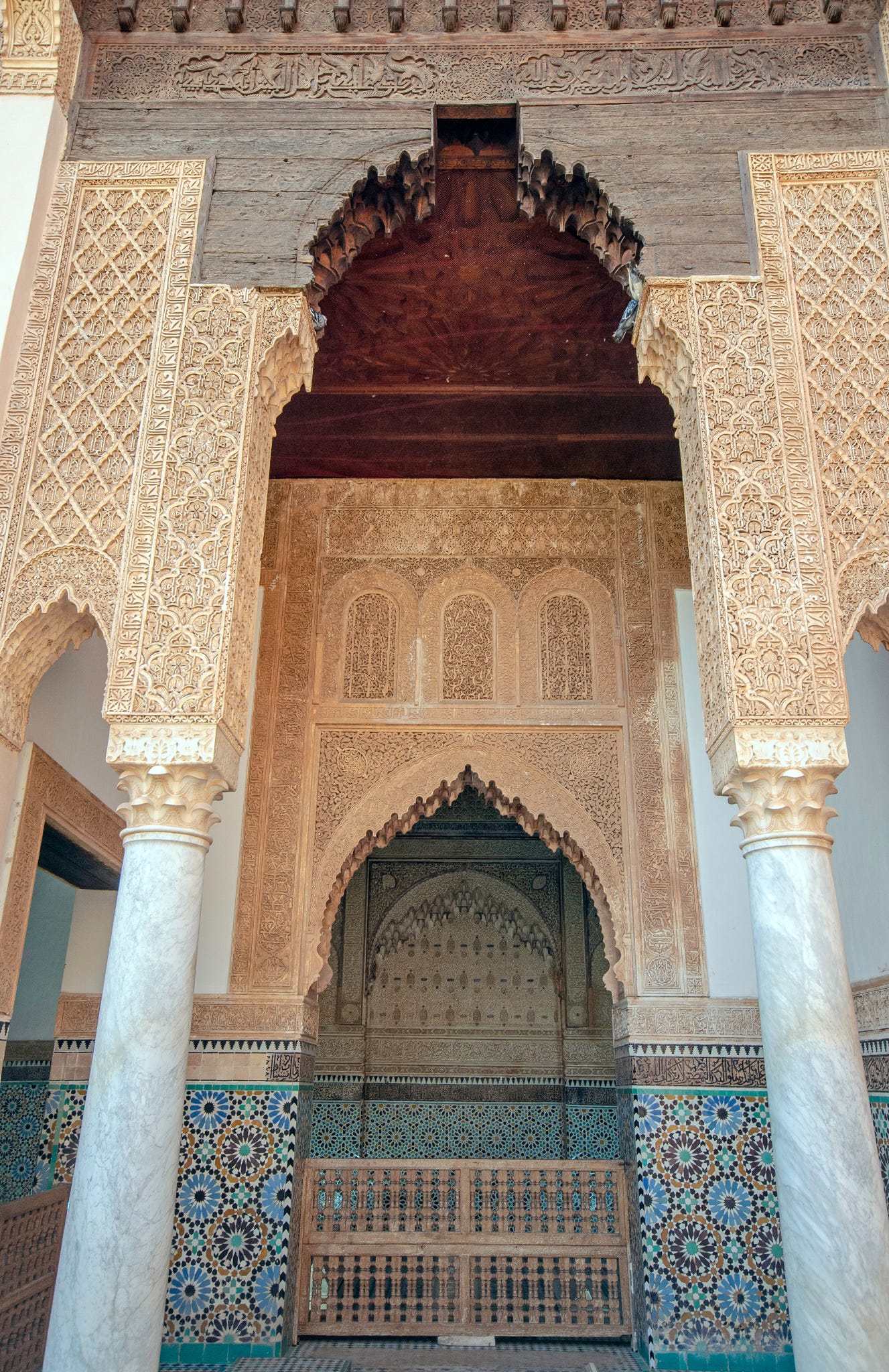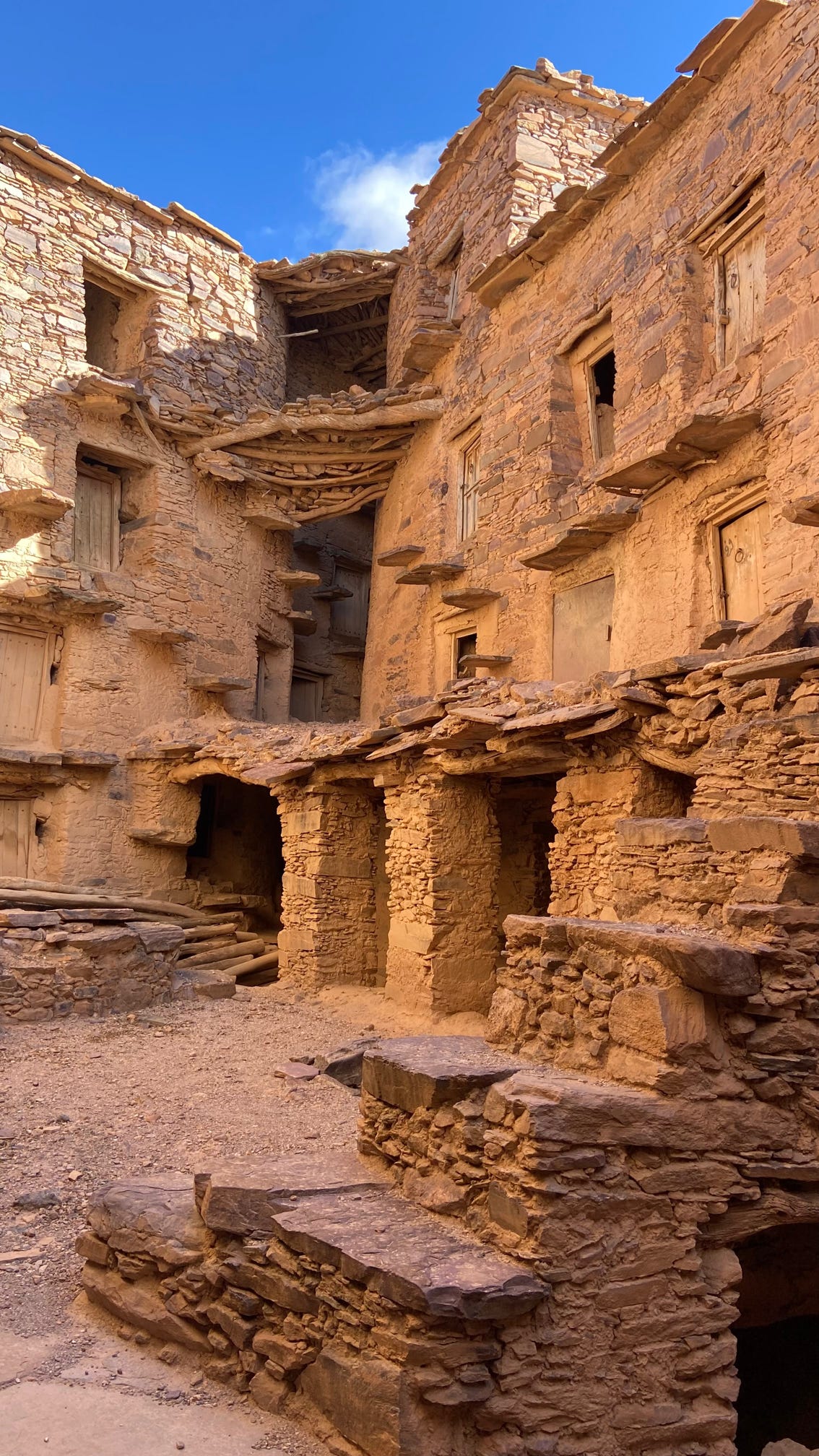
Majestic Agadirs preserve an Incredible Legacy of its Strength 2025
Agadir: The Ancient Granaries of the Souss Massa Tribes
In Morocco, Agadir granary is known as an Igoudar. These ancient structures serve as the “banks” of the Souss Massa tribes, playing a crucial role in food security and symbolising a well-organised tribal system. The terms “Agadir” and “Igoudar” are often used interchangeably, though the specific term varies by region and Berber dialect.
They are traditional storage constructions found primarily in southern Morocco, built with mudbrick or stone to withstand environmental threats such as humidity, pests, and extreme temperatures. They are strategically placed in or near villages to ensure easy access and to safeguard food supplies during times of scarcity. Beyond their function as granaries, these structures also serve as defensive fortresses, reinforcing the idea of collective protection and tribal unity. Some of these granaries continue to operate today, preserving an invaluable piece of Morocco’s cultural and historical legacy.
Architectural Features and Construction
The design of Agadirs varies widely, ranging from simple, useful constructions to elaborate buildings adorned with traditional motifs and carvings. While some are standalone granaries, others form part of larger fortified compounds, enhancing security against potential raids. These granaries are often positioned in high-altitude or concealed locations, reflecting the need for both storage and protection.
Four Main Types
- Granaries built on rocky peaks – Constructed at high elevations to provide a natural defensive advantage.
- Granaries built into cliffs or caves – Embedded in the landscape, offering insulation and additional security.
- Quadrangle-style granaries on the ground – Organised in a courtyard-like manner, allowing easy communal access.
- Granaries built in oases – Situated within fertile agricultural zones for proximity to crops and food supplies.
Each one consists of a number of chambers or rooms, each assigned to a specific family within the village. These chambers were passed down from generation to generation, ensuring continuity in food security and property inheritance. The structural integrity of these granaries allows them to endure for centuries, preserving their function and significance within Berber communities.
The Guardian of the Granary: The Amin
Every Granary features a single entrance, which is closely monitored by the Amin, the official guardian of the granary. The Amin’s responsibilities include opening and closing the main door, maintaining security, and granting access to chambers located at higher levels.
For visitors exploring restored Agadirs, the Amin often provides guided access, ensuring an authentic experience. Even if he is not immediately present, it is common for him to observe visitors from a distance and arrive shortly to grant entry.
Cultural and Social Significance
These buildings are more than just storage spaces; they represent the collective strength and unity of Berber tribes. These granaries highlight the importance of cooperation, shared responsibility, and organized governance within traditional Moroccan communities.
The communal nature of Agadirs demonstrates how tribes worked together to store food, safeguard valuables, and protect resources, ensuring their survival in harsh environments. Many granaries also included designated areas for storing important documents, jewelry, and even weapons, reinforcing their role as multi-purpose tribal institutions.
The Decline and Revival of Agadirs With modernization and the adoption of industrialized storage methods, the use of traditional granaries has declined in some areas. However, there is a growing movement to preserve and restore these historical landmarks as part of Morocco’s rich cultural heritage.
Several Agadirs have been recognized for their historical and architectural significance, prompting efforts to protect them from deterioration. Some of these structures have even been transformed into museums and cultural centers, providing insight into Berber traditions, historical storage methods, and Morocco’s rural way of life.
Organizations and local communities are actively working to raise awareness about the importance of Agadirs, ensuring their legacy continues for future generations.
Visiting the Agadirs of Morocco
For travellers interested in history, architecture, and cultural heritage, visiting an Agadir offers a unique insight into Morocco’s past and the ingenuity of Berber craftsmanship.
If you plan to visit an Agadir, it is highly recommended to book a guided tour, as these sites may be difficult to locate without local knowledge. A guided tour provides historical context, architectural insights, and an immersive cultural experience, ensuring you make the most of your visit.
Agadirs are an integral part of Morocco’s architectural and cultural heritage, reflecting the ingenuity, resilience, and communal spirit of Berber tribes. From their defensive structures to their role in food security, these granaries stand as a testament to centuries of Moroccan history and tradition.
As interest in cultural preservation grows, more efforts are being made to restore and protect these ancient granaries, ensuring they remain a source of knowledge and inspiration for generations to come.
📍 Book our specialist granary tour today to explore some of the most breathtaking Agadirs in southern Morocco, and witness firsthand the timeless legacy of Berber craftsmanship and community organization!
Table of Contents
contents






